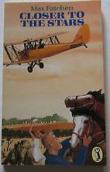AustLit
Latest Issues
Publication Details of Only Known VersionEarliest 2 Known Versions of
Works about this Work
-
y
 Elements of Carnival and the Carnivalesque in Contemporary Australian Children's Literature
Sydney
:
2009
27495428
2009
single work
thesis
Elements of Carnival and the Carnivalesque in Contemporary Australian Children's Literature
Sydney
:
2009
27495428
2009
single work
thesis
'This thesis discusses the influence of elements of Bakhtinian camivalesque in selected contemporary Australian children’s literature. Many of the Bakhtinian ideas are centred on the work of Franqois Rabelais, particularly his five books collectively entitled Gargantua and Pantagruel. Aspects of the complex field of Bakhtinian camivalesque that have been considered include: attitudes to authority, the grotesque body and its working, the importance of feasting and the associated concepts of bodily functioning, customs in relation to food, and ritual and specific language such as the use of curses and oaths. The role of humour and the manifest forms this takes within carnival are intrinsic and are discussed at some length. These central tenets are explored in two ways: first, in relation to their connection and use within the narrative structures of a selection of books short listed (and thus critically acclaimed) by the Australian Children’s Book Council from the early 1980s to the early 2000s, and second, by means of contrast, to the commercially popular but generally less critically acclaimed works of other Australian writers such as Paul Jennings and Andy Griffiths. The thesis concludes by considering the ways in which camivalesque freedom is encouraged through and by new media.'
Source: Abstract.
-
Untitled
1982
single work
review
— Appears in: Reading Time : The Journal of the Children's Book Council of Australia , July no. 84 1982; (p. 43)
— Review of Closer to the Stars 1981 single work children's fiction -
Untitled
1981
single work
review
— Appears in: The Junior Bookshelf , October vol. 45 no. 5 1981; (p. 5)
— Review of Closer to the Stars 1981 single work children's fiction
-
Untitled
1981
single work
review
— Appears in: The Junior Bookshelf , October vol. 45 no. 5 1981; (p. 5)
— Review of Closer to the Stars 1981 single work children's fiction -
Untitled
1982
single work
review
— Appears in: Reading Time : The Journal of the Children's Book Council of Australia , July no. 84 1982; (p. 43)
— Review of Closer to the Stars 1981 single work children's fiction -
y
 Elements of Carnival and the Carnivalesque in Contemporary Australian Children's Literature
Sydney
:
2009
27495428
2009
single work
thesis
Elements of Carnival and the Carnivalesque in Contemporary Australian Children's Literature
Sydney
:
2009
27495428
2009
single work
thesis
'This thesis discusses the influence of elements of Bakhtinian camivalesque in selected contemporary Australian children’s literature. Many of the Bakhtinian ideas are centred on the work of Franqois Rabelais, particularly his five books collectively entitled Gargantua and Pantagruel. Aspects of the complex field of Bakhtinian camivalesque that have been considered include: attitudes to authority, the grotesque body and its working, the importance of feasting and the associated concepts of bodily functioning, customs in relation to food, and ritual and specific language such as the use of curses and oaths. The role of humour and the manifest forms this takes within carnival are intrinsic and are discussed at some length. These central tenets are explored in two ways: first, in relation to their connection and use within the narrative structures of a selection of books short listed (and thus critically acclaimed) by the Australian Children’s Book Council from the early 1980s to the early 2000s, and second, by means of contrast, to the commercially popular but generally less critically acclaimed works of other Australian writers such as Paul Jennings and Andy Griffiths. The thesis concludes by considering the ways in which camivalesque freedom is encouraged through and by new media.'
Source: Abstract.
Awards
- 1982 shortlisted CBCA Book of the Year Awards — Book of the Year Award
- 1940s



